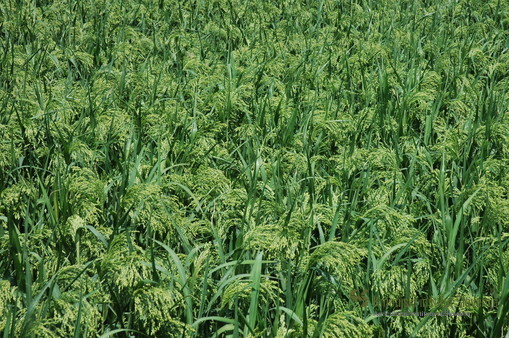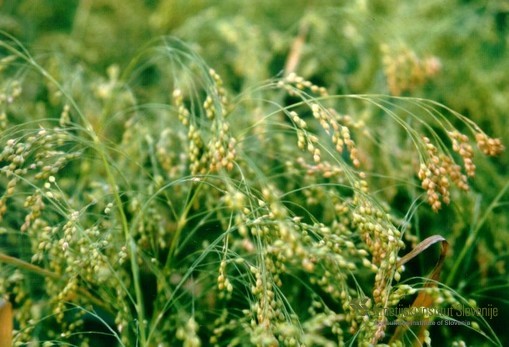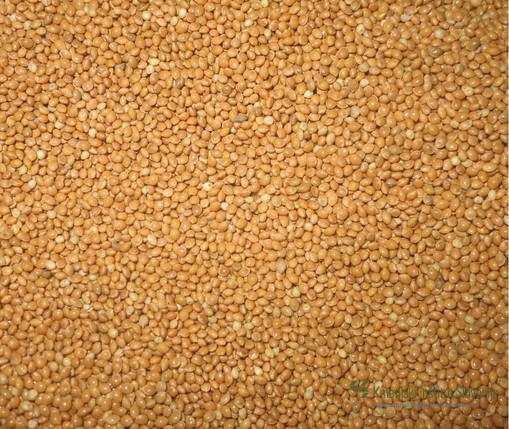

Millet variety Sonček in Jablje

Grains ripen unevenly according to their position in the panicle inflorescens

Grains of millet variety Sonček
The United Nations General Assembly has declared 2023 as the International Year of Millets.
Millet is an ancient cereal and is part of the tradition of many cultures in Asia, sub-Saharan Africa and Europe.
In response to climate change, agricultural crops that are less sensitive to warmer temperatures are regaining ground. This includes millets, which thrive under more demanding growing conditions.
Slovenian indigenous millet variety Sonček
Slovenia is proud to have an indigenous variety of common millet called Sonček. The source material for the Slovenian variety Sonček are millet populations grown in the past in the wider Gorenjska region. Populations with a broader genetic structure are usually better adapted to less favourable growing conditions (cooler, wetter conditions, extreme droughts, less intensive fertilisation, etc.) and more resistant to diseases and pests. During the original harvest of the Gorenjska millet population, a positive selection of the visually most beautiful (healthy, robust, undamaged) medium-early plants was made at the then Centre for Agricultural and Rural Development in Jable (which later became part of the Agricultural Institute of Slovenia) and the thickest seeds were selected after harvest. This seed was the basis for the variety 'Sonček'.
Registration in the Variety List, which began in 2003, established that it was an indigenous variety, distinct from other varieties and of suitable value for production and use. The decision to register the conservation millet variety 'Sonček' in the List of Varieties of the Republic of Slovenia was taken on 29 August 2005. The maintainer of the variety was the then Centre for Agricultural and Rural Development in Jable, and since the decision of 4 February 2013 it has been the Agricultural Institute of Slovenia.
Characteristics of the Sonček common millet variety
The plant is medium sized (about 80 cm under average conditions), light green, with long and arching panicles. The grain is light to yellow-brown and medium thick. The grains ripen unevenly depending on their position in the panicle.
The variety Sonček is drought tolerant, resistant to fungal attack and diseases. The dry grain yield is up to 3 500 kg/ha.
Cultivation and use
Millet variety Sonček can be grown as a main crop or as a stubble crop. It is sown as a main crop when there is no longer any danger of frost (in May). It is more economical to grow millet as a stubble crop (subsequent crop), sown as soon as possible after the harvest of the main crop (after crimson clover, barley, wheat, etc.) by 15 July, as later sowings give much lower yields. The growth period of millet is about 100 days. It is harvested when most of the ear is light brown, between the end of August and mid-October, depending on the sowing date and the conditions during the growing season. It is usually necessary to dry the millet after harvesting.
The grain is used for food (porridge, flour) and there are many different recipes, from traditional to modern. The grains can also be used as feed for domestic animals (especially for poultry), and ruminants can also be fed whole green plants.